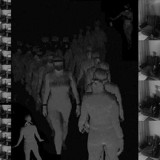Supervisor:
Architectural Design
Audiovisual Art
2005
This research is about the perception and the significance of the structured environment that man ascribes to it, through his living experience. Considering that the residence constitutes the spatial background of daily living, it stands as the preferential place for the consideration of the relation that man develops with space. The long lasting habitation and familiarity to the architectural place of the residence elect the argumentative character that connects man’ s bodily form to this surrounding perceptible form of place. Aiming to a better consideration of the query of man’s perception there is a context of theories of different fields such as philosophy, environmental psychology, cognitive psychology, social sciences, and kinesiology. Furthermore, a number of experiments took place in the personal residence in order to obtain real-time documentation of perceptional experiences. This research attempts to prove that man doesn’t function as an unbiased perceptive mechanism that strolls into the space in order to record it, but also he usrupts it through his body. This procedure occurs via a detection of the main perceptive system that allows man to experience his environment. Man’s innate tendency to adapt the spatial layout of structures of through the corporal memory, supplies him with both meaningw and practices of the dialectic relation that exists between his body and his residence. Considering that the body interacts with the space and develops a bi-directional relation with it, we realize that various architectural handlingw cause each time the transformation of bodily data. The space, finally, is presented as a field of possible movements and movements coexist with it as potential spatial shapings.
